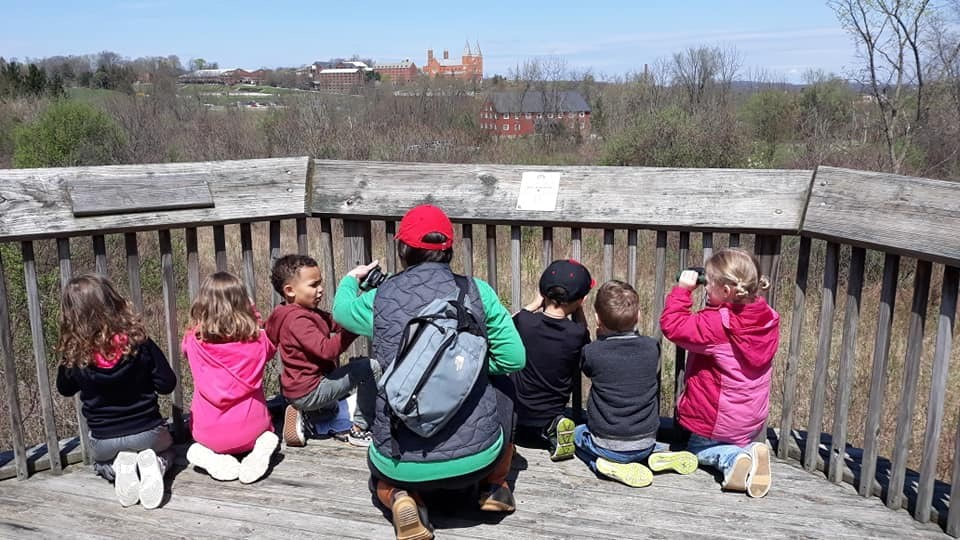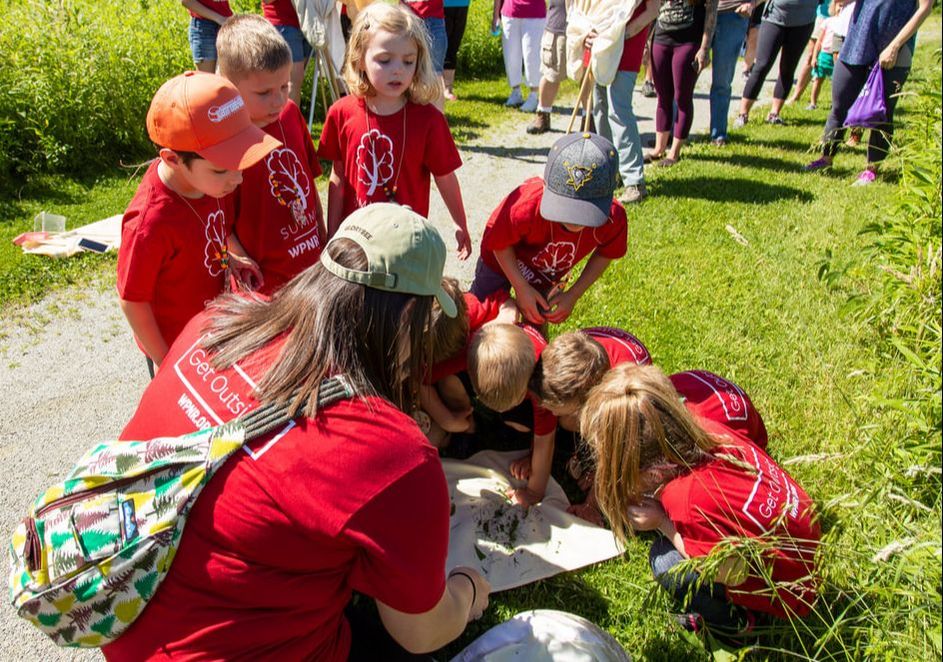|
At Winnie Palmer Nature Reserve nature experiences and good health go hand in hand.
Now is the opportunity to start summer learning and take your families into the outdoor classroom. Simple yet powerful activities you can do at home, at a park, or at a special spot, like Winnie Palmer Nature Reserve, can connect the whole family to the natural landscape. Here are a few of the Director of the Winnie Palmer Nature Reserve, Angela Belli’s favorite summer nature adventures to spark anyone’s curiosity of the world around them.
1 Comment
Hey neighbors!
 Spearmint in the wild. (click to enlarge) Spearmint in the wild. (click to enlarge) Spearmint and Peppermint There are many kinds of mint growing in the gardens but the true peppermint and spearmints have the best flavor. Harvested in the early morning after the dew has dried, these mints are gently rinsed, bundled, and hung to dry before being de-stemmed and stored. They are so prolific, I can harvest copious amount all summer long. Mints are wonderful pollinator plants so I'm always sure to leave lots of flowers for our friends. Mints can be used in teas, fresh or dried in fruit salads, or to make herbal waters. My personal favorite is cubed papaya with a squeeze of lime, chopped mint, and a drizzle of raw honey from our apiary. Lemon Balm Melissa officinalis is an amazing herb for soothing stressed nerves, anxiety, and digestive issues. With a light, sweet, lemony flavor, it can be paired with many other herbs for teas, herbal waters, and other infused drinks. It's name is derived from the Greek word for honey, which is no surprise given how many pollinators this herb attracts. It's a very easy to grow perennial, and like the other mints, it shares a family with, can be aggressive in the garden. Tulsi or Holy Basil With its tutti-frutti scent and sweet flavor, this herb is like no other. Grown in almost every household in India for it's reputed protective qualities, Tulsi is my absolute favorite. It's an adaptogenic herb which means that it has the ability to help the body deal with stress on a physical level. It can be consumed as a tea and mixed with other herbs and flowers such as rose petals or lavender. It's an annual which means in our zone you'll have to plant it every year, but it produces lots of seeds. You can either collect the seeds and grow new plants the next season, or you can allow Mother Nature to do the work for you and just wait for it to reseed. Elderberry Elderberry is the great healer. Folklore says that the mother elder tree was placed at the head of the garden to protect all of the other plants and ensure a bountiful harvest. It makes an amazing jelly, the sweetest wine, and a flavorful pie. Clinical studies show that elderberry is effective in treating viral illness which means that regular consumption may protect you during cold and flu season. I like to boil the fresh or dried berries with a slices of ginger and a few cloves, then mix the cooled juice with raw honey for a lovely syrup. Your kids will never complain about taking this medicine! Use caution with elderberries since the leaves, stems, raw seeds, and unripe berries are toxic. Catnip If you're plagued by insomnia, consider growing catnip. Gentle enough for babies, more mint-like than chamomile, catnip has mild sedative qualities that can help ease you into a slumber. Also called catmint, as it's a member of the mint family, and it is indeed the same catnip your feline friends love to indulge in since it exudes feline sex pheromones. In our zone this easy to grow perennial can be harvested repeatedly throughout the season. Try a bit of cooled tea with a touch of honey for toddlers and young children who are restless. Fennel Upset stomach and indigestion got you down? The anise-like flavor of fennel soothes your digestive woes. As a prolific perennial, it only needs to be planted once. It reseeds easily and can be a garden thug if not kept in check with frequent removal of young seedlings. As a bonus, it's the host plant to the gorgeous Eastern Black Swallowtail Butterfly and makes a beautiful ornamental backdrop plant in gardens. Stinging Nettle An allergy sufferers best friend, stinging nettles are one of natures super heroes. High in vitamins and iron, they can be used for everything from medicine to meals. Picked early in the spring, they can be made into a nutritious pesto or mixed with peppermint for a refreshing tea. Be careful when harvesting nettles because, as the name implies, they sting. The leaves and stalks are covered with tiny barbs that contain formic acid, histamine, and other acids which cause a burning, itchy rash...not to worry, it will subside in an hour or so. Like bees used in apitherapy, stinging nettle has been used for arthritis treatment and other joint inflammation issues. You don't have to grow nettles in your garden, as they are found all over wild spaces in our region. Just be sure to harvest from a clean area free from pesticides and herbicides. Use gloves when handling and be sure to dry or expose to heat before consuming. I hope you all are able to enjoy a little of nature's abundance from your own gardens and if you'd like to try out some of our tea blends or learn more about the herbs growing in the gardens at WPNR, please join us for a Colonial Christmas fireside herb talk and tasting on December 6, 2018 from 12:00-2:00pm. You can find out more about this fun and tasty adult event and register below. Thanks for supporting us and check back next week for more Wilding Wednesday! AuthoRJennifer Eppolito, Education Horticulturist
The Winnie Palmer Nature Reserve at Saint Vincent College hosted its annual Bug Camp for 5-6 year olds (with an adult). Campers search for butterflies, spiders, dragonflies, bees, beetles, and more!
|
AboutThe Walzer Way Blog is maintained by WPNR staff with contributions from Saint Vincent College students and staff, volunteers, community members, and more. If you are interested in contributing to The Walzer Way Blog, contact the Learning Barn. Categories
All
Archives
March 2020
|




 RSS Feed
RSS Feed

